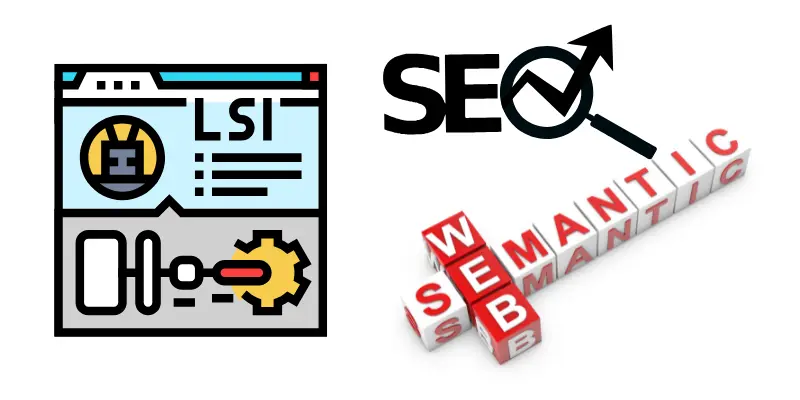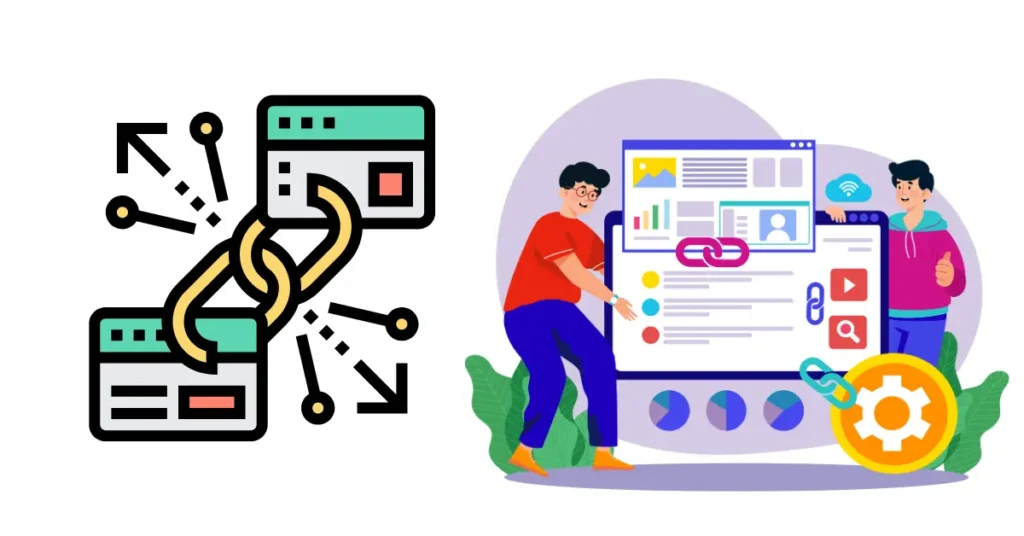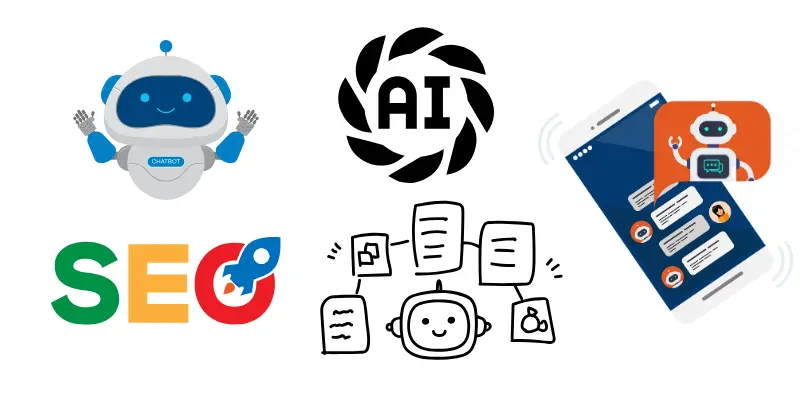Entity-Based SEO: The Future of Semantic Search Optimization (2025 Guide)
Published: 10 Jul 2025
Ever wondered why your content isn’t ranking—even when you’ve perfectly optimized your keywords?
That’s because modern search engines like Google no longer rely only on keywords—they understand entities.
In 2025, Google’s algorithms (like MUM and Gemini) are built to interpret meaning, context, and relationships. This shift is known as Entity-Based SEO—and it’s changing the way we create, structure, and optimize content.
In this guide, we’ll simplify entity SEO, explain why it matters, and show you exactly how to future-proof your content for semantic search.
On This Page
Part 1: What Is Entity-Based SEO?
What is an Entity?
In SEO terms, an entity is any clearly defined thing, such as a:

- Person (e.g., Albert Einstein)
- Place (e.g., New York City)
- Brand or organization (e.g., Nike)
- Concept or topic (e.g., Search Engine Optimization)
- Product (e.g., iPhone 15)
Google defines an entity as:
“A thing or concept that is singular, unique, well-defined and distinguishable.”
Entities are stored in Google’s Knowledge Graph, which connects them to other related entities using semantic relationships—like a digital brain map.
Keywords vs Entities

| Keywords | Entities |
|---|---|
| Focus on exact match phrases | Focus on concepts & relationships |
| “Best SEO tools 2025” | SEO → Tools → Platforms → Reviews |
| High reliance on frequency | Relies on contextual understanding |
| Can confuse bots with synonyms | Recognized even across synonyms |
For example:
Google knows that “Barack Obama” is an entity even if you search “former US president”. It understands the context, not just the words.
Where Do Entities Show Up in SEO?
- Knowledge Panels (right side of Google search)
- Featured Snippets and SGE answers
- People Also Ask questions
- Image and video carousels tied to topics
- Voice search results
All of these depend on how clearly your content aligns with known entities.
Simple Example of Entity Relationships
Let’s take the entity “Digital Marketing”:
Google connects it to:
- Sub-entities: SEO, PPC, Email Marketing
- Tools: Google Analytics, SEMrush
- Related concepts: Online Advertising, Content Strategy
If your content only mentions “marketing,” you’re missing the semantic web. But if it includes related terms, structured data, and internal links—it’s more likely to be understood as part of the entity network.
Part 2: Why Entities Matter
As Google becomes more advanced, entity-based SEO is now central to how your content ranks, gets featured, or even appears in AI-generated results. Here’s why this matters more than ever in 2025 and beyond:

Google Uses Entities to Understand Meaning — Not Just Match Words
Google’s MUM (Multitask Unified Model) and Gemini AI models are trained to understand:
- The topic you’re writing about
- How it relates to other topics
- The authority and trust behind your content
This means your content doesn’t need to repeat keywords—it needs to provide contextually relevant, accurate information built around entities.
The Knowledge Graph Drives Google’s Understanding
Google’s Knowledge Graph acts like a database of entities and their relationships.
If your blog mentions “SEO,” Google checks:
- Are you discussing it as a concept?
- Are related entities like “Google Search Console,” “On-Page SEO,” or “Backlinks” present?
- Are you linking to authoritative or semantically connected content?
💡 Pro Tip: If your content doesn’t connect clearly to relevant entities, you’re less likely to be shown in SGE answers or featured snippets.
Topical Authority Is Now Entity-Driven
Gone are the days of ranking with isolated posts.
In 2025, to rank for competitive topics, you must demonstrate topical authority—by covering a range of semantically related subtopics and entities.
✅ Example:
Want to rank for “Technical SEO”?
Your site should also cover:
- “Crawl Budget”
- “Core Web Vitals”
- “Schema Markup”
- “Canonical Tags”
Each of these is a sub-entity linked to the parent entity “Technical SEO.”
Learn how to do a technical audit of your website.
This builds semantic depth and helps Google see your site as a trusted source on the topic.
AI Assistants & SGE Use Entity Understanding
AI-powered search engines like Google SGE, ChatGPT, and Bing Copilot prefer structured, entity-rich content because:
- It’s easier to parse into answers
- It aligns with user intent
- It builds a reputation of trust
If your site connects well-known entities in meaningful ways, it’s more likely to be:
- Featured in zero-click AI results
- Suggested by search assistants
- Quoted or cited by LLMs and agents
Entities Support E-E-A-T
Google’s guidelines for Experience, Expertise, Authoritativeness, and Trust (E-E-A-T) also align with entity-based SEO.
When you mention specific brands, people, products, and publications (and back them with links or schema), you’re:
- Associating with trusted entities
- Strengthening your content’s credibility
- Improving chances of ranking for informational and commercial queries
Part 3: How to Optimize Your Content for Entity-Based SEO
Now that you understand what entities are and why they matter, let’s make your content entity-optimized for Google, AI models, and semantic search engines.
Here’s a beginner-friendly implementation process that blends semantic SEO, structured data, and topical clustering.
1. Use NLP & Semantic Keyword Tools
Start by identifying related entities to your target topic using these tools:
- Google NLP API: Analyze your content to see which entities Google recognizes
- InLinks: Maps topic relationships and suggests entity links and schema
- LSIGraph or KeywordTool.io: Generate semantic keyword variations
💡 Example: If your focus is “content marketing,” related entities might include:
- Blog strategy
- Buyer journey
- Lead magnet
- Email nurturing
- Marketing funnel
Related Reading: How To Write Powerful SEO-Optimized Content.
2. Build Topical Clusters Around Entities
Organize your blog content into semantic clusters. Each parent entity (pillar) should be supported by cluster content targeting sub-entities.
Example:
| Pillar Topic | Supporting Topics (Entities) |
|---|---|
| Technical SEO | Schema, Canonical Tags, Core Web Vitals, HTTPS |
| Content Marketing | Buyer Personas, Email Funnels, Lead Magnets |
| Entity SEO | Structured Data, Knowledge Graph, NLP Optimization |
Link all these posts internally using optimized anchor text to build semantic relationships.
🔗 Example internal anchor:
"Understanding schema markup is essential for any entity-focused SEO strategy."
→ Link to your Schema Markup Guide when available.
3. Apply Structured Data (Schema Markup)
Structured data helps Google explicitly understand the entities in your content.
Use tools like Schema Markup Generator to add:
Article,Organization,Person(for author info)FAQ,HowTo,Product,Event, orReviewschemaBreadcrumbschema for better site structure
📌 Tip: Add sameAs properties to link your brand to known entities:
jsonCopyEdit"sameAs": [
"https://en.wikipedia.org/wiki/Digital_marketing",
"https://twitter.com/yourhandle",
"https://linkedin.com/company/yourcompany"
]
4. Include Supporting Entities in Content Naturally
Don’t keyword-stuff! Instead, mention related entities in natural, contextual ways.
🧠 Example:
Instead of writing:
“SEO is important for websites.”
Write:
“Effective SEO—especially strategies like internal linking, Core Web Vitals optimization, and structured data—helps search engines understand your content better.”
This covers multiple sub-entities that reinforce topical relevance.
5. Link Out to Trusted External Entities
Google uses external links as signals of relevance and trust.
✅ Link to:
- Wikipedia or official sources (for definitions or concepts)
- Authoritative blogs or Google documentation
- Tools like Google NLP, InLinks, or IBM Watson when mentioned
Example:
“According to Google’s NLP API, entities help categorize and understand content contextually.”
6. Optimize Internal Linking for Entity Relationships
Use strategic anchor text that reflects entity names or semantic meaning.

Examples:
- “Learn more about Knowledge Graph SEO”
- “Check out our guide on Semantic Search Optimization”
- “Understanding structured data is key for entity SEO”
Each of these reinforces your entity map.
7. Create an Entity Map for Your Site
Map out your content entities using a spreadsheet or diagram.
Include:
- Target Entity (e.g., Content Marketing)
- Sub-Entities (e.g., Lead Magnet, Blog Strategy)
- Supporting Content URLs
- Related Schema Types
- Internal and External Links
This helps plan future content and strengthen your semantic authority.
Part 4: How to Measure and Improve Your Entity-Based SEO Performance
Once you’ve optimized your content around entities, you need to track what’s working—and what’s not.
Here’s how to monitor your performance, refine your strategy, and stay ahead in semantic search.
1. Use Google Search Console for Semantic Clues
While GSC doesn’t directly show “entities,” it provides indirect signals:
- Performance tab → Track queries and impressions for semantically related terms
- Pages tab → See which content is gaining traction (e.g., cluster pages)
- Enhancements tab → Check structured data like FAQ, Article, Breadcrumb schema
💡 Look for rising impressions in “People Also Ask” or rich results—this signals alignment with entity-driven search.
2. Monitor Knowledge Panel & SGE Presence
Check if your brand or topics show up in:
- Knowledge Panels (right sidebar of Google search)
- SGE snippets (AI-generated summaries)
- Featured Snippets / FAQs
Use tools like Kalicube Pro or manual brand queries to monitor Knowledge Graph presence.
3. Track Semantic Relevance With These Tools
Here are the best tools for entity-level analysis:
| Tool | Purpose |
|---|---|
| InLinks | Map and optimize entities, schema, and clusters |
| Google NLP API | Extract and score entities from your content |
| Surfer SEO | Check topical coverage vs. competing pages |
| Semrush Topic Research | Suggests semantically related content ideas |
👉 Bonus: Some tools (like InLinks) show whether an entity is already in Google’s Knowledge Graph.
4. Track Engagement & Authority
Remember: entity SEO isn’t only about rankings. It’s about trust, authority, and user satisfaction.
Measure:
- Bounce rate and time on page (via Google Analytics 4)
- Referral traffic from high-authority sources
- Social shares and citations from trusted blogs or authors
5. Continue Expanding Topical Clusters
Once one entity hub is strong (e.g., On-Page SEO), build supporting content for related sub-entities:
- Schema Markup
- Image Optimization
- Anchor Text Strategies
- Internal Linking
- NLP in SEO
This makes your website the go-to source on that semantic topic—improving both rankings and SGE visibility.
Final Thoughts
Entity-based SEO isn’t a hack—it’s a modern framework for building smarter content.
By focusing on how Google understands meaning, not just keywords, you can:
- Future-proof your rankings in a world of AI-powered search
- Build deeper trust with both users and algorithms
- Appear in more featured snippets, knowledge panels, and SGE summaries
Start now by auditing your existing content for entities, and slowly evolve your site from keyword-focused to concept-driven.
FAQs
What is entity-based SEO?
It’s an SEO approach focused on optimizing content around concepts (entities) instead of just keywords, helping Google better understand your topic.
How does entity SEO differ from traditional SEO?
Traditional SEO focuses on keyword frequency, while entity SEO builds context through related concepts, structured data, and semantic relevance.
Why is entity SEO important in 2025 and Beyond?
With Google’s AI models like Gemini and MUM, content is ranked based on meaning, topical authority, and entity relationships.
How do I find entities related to my content?
Use tools like Google NLP, InLinks, or Surfer SEO to identify entities and map semantic clusters.
Can entity SEO improve my visibility in SGE or AI search?
Yes. Entity-optimized content is more likely to be featured in AI snippets, voice search, and Knowledge Panels.

- Be Respectful
- Stay Relevant
- Stay Positive
- True Feedback
- Encourage Discussion
- Avoid Spamming
- No Fake News
- Don't Copy-Paste
- No Personal Attacks

- Be Respectful
- Stay Relevant
- Stay Positive
- True Feedback
- Encourage Discussion
- Avoid Spamming
- No Fake News
- Don't Copy-Paste
- No Personal Attacks



